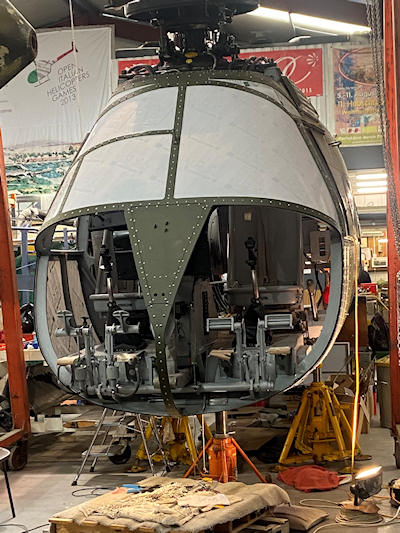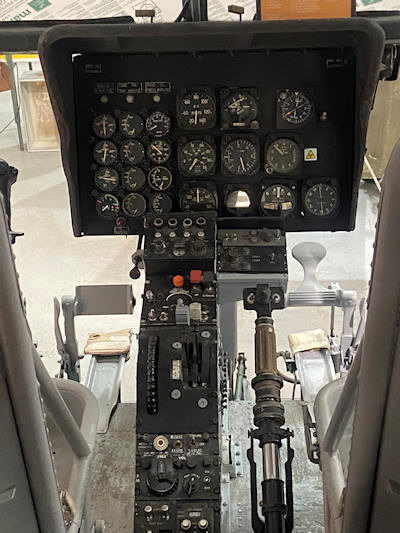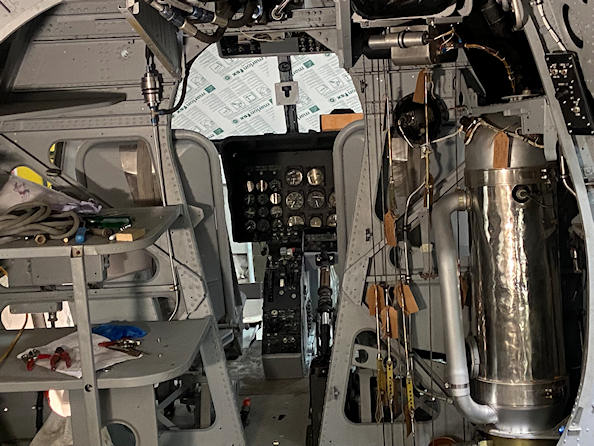Restoration of Piasecki H-21C 'Flying Banana' FR41
Volunteers at the Helicopter Museum in Weston-super-Mare have started work on a new major restoration project, a Piasecki H-21 “Flying Banana” tandem-rotor helicopter originally built in Philadelphia in 1956 and recovered in 2016 from a college in France after a long career with the French Army Air Force.
History
 The world’s first tandem rotor helicopter to enter widespread military service, the H-21 followed the experimental XHRP-1 which introduced the unusual kinked fuselage which allowed the two rotors to safely avoid the risk of the blades colliding and placed the heavy piston engine on the centre of gravity. First flown in 1952 the prototype was soon followed by production for the US Army, with the first of 334 aircraft delivered in September 1954 and subsequently participating in the early stages of the Vietnam War.
The world’s first tandem rotor helicopter to enter widespread military service, the H-21 followed the experimental XHRP-1 which introduced the unusual kinked fuselage which allowed the two rotors to safely avoid the risk of the blades colliding and placed the heavy piston engine on the centre of gravity. First flown in 1952 the prototype was soon followed by production for the US Army, with the first of 334 aircraft delivered in September 1954 and subsequently participating in the early stages of the Vietnam War.
At this time France was also involved in conflict, notably in its own Indo-Chinese colonies and in Algeria, where the National Liberation Front was seeking independence. Consequently the French government ordered 98 H-21s to provide an assault transport capability and the museum example was one of these, shipped direct to Algiers in April 1957. Serialled FR41 it served with both the Army and the Marines until 1962, when it was shipped to France and the Army Air Force training school at Dax. Here it continued in service for a further six years before being withdrawn from use and sent to an Army firing range near Toulouse.
Over the next decade FR41 slowly decayed in the middle of the range until in October 1981, it was rescued by Centre d’Etudes et de Loisirs Aerospatiaux in Grenoble. Here students attempted a partial restoration and converted the cabin into a mini cinema, but downsizing in 2015 meant that this rare and historic helicopter had to go. Fortunately the Helicopter Museum already had a good relationship with the College and was quick to add the H-21 to its collection when the offer was made to transfer ownership.
Chairman of the Helicopter Museum Trustees, Elfan Ap Rees, who researched the history of FR41 and organised the transfer said, “This is a very rare helicopter and the only example of an H-21 in the UK. Whilst a full restoration is unlikely because of the cost and missing parts, it is certainly possible to restore the aircraft to show off its colourful history and early tandem-rotor technology, that eventually led to the Boeing Chinook of today.
Arrival at The Helicopter Museum

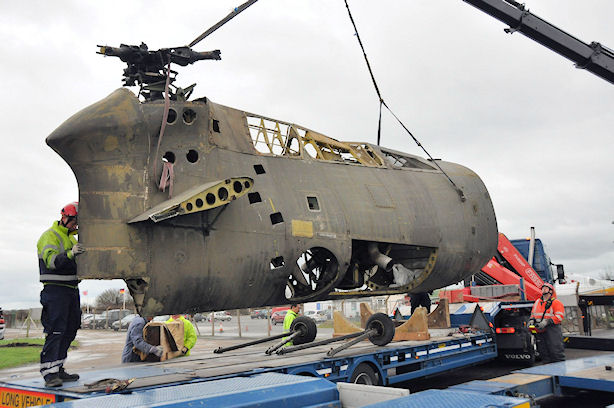
Restoration started April 2019
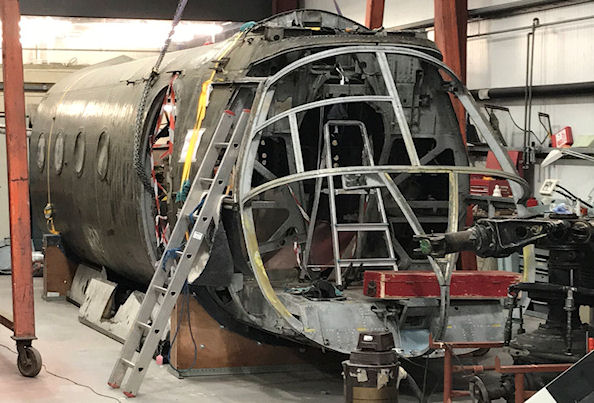
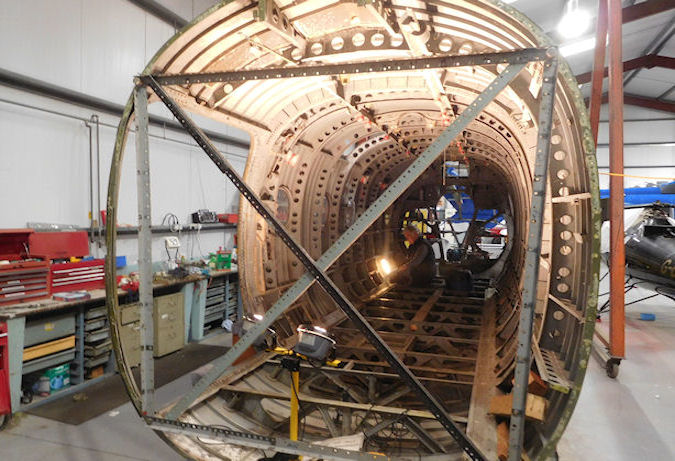
Piasecki H-21C 'Flying Banana' FR41 - Cockpit Panels Restored
Since the front section of the H21 ‘Flying Banana’ was moved into the restoration hangar in March 2019 the restoration team have been busy cleaning the inside and removing major items like rotor heads and control assemblies for restoration on the bench. The team’s work has been impacted by Covid restrictions however In March 2022 we reached a milestone with the completion of the work on the Cockpit Panels. The main Instrument Panel, Overhead Panel and the Hydraulic Control Valve Console have been successfully restored. Each item was cleaned, repaired and repainted. Where possible the original instruments and lighting were re-fitted. However, innovative solutions were required to replace missing items. One example is the use of 3D printing to remanufacture lighting bezels and circuit breakers. These assemblies are now ready to be re-installed in the cockpit.
The three pictures below show what a sorry state these items were in when the helicopter was acquired by the museum.
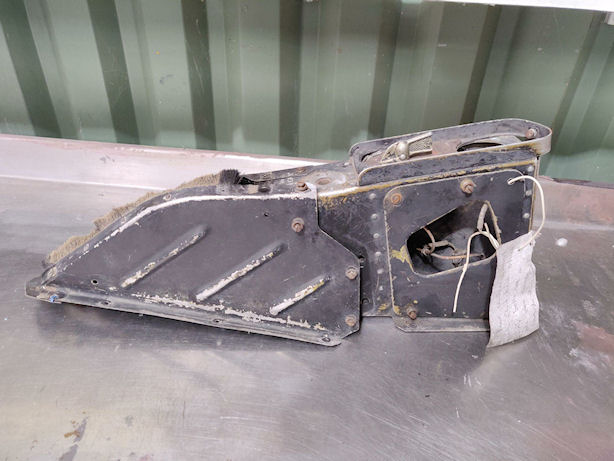
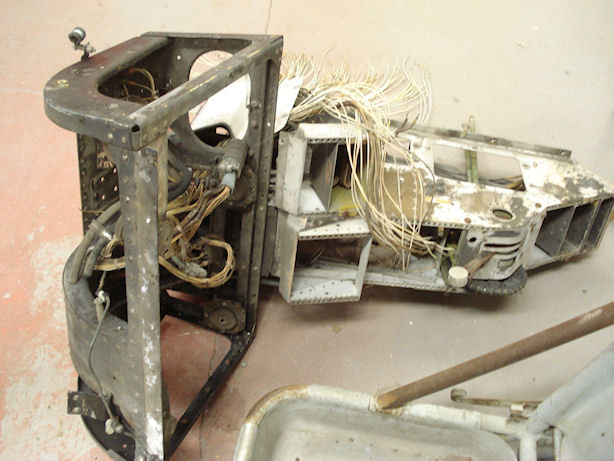
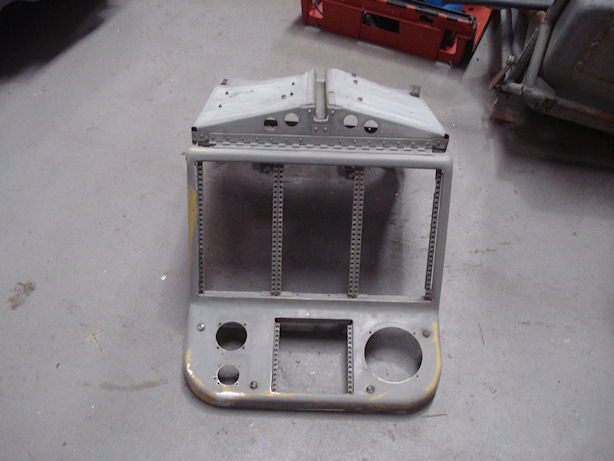
The team used the Illustrated Parts List and other documents from the 1950s. They contain drawings and details of the assemblies and sub-assemblies fitted to the helicopter and proved invaluable.
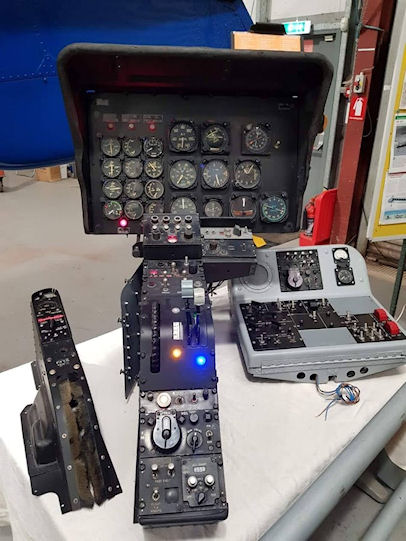
Piasecki H-21C 'Flying Banana' rear section
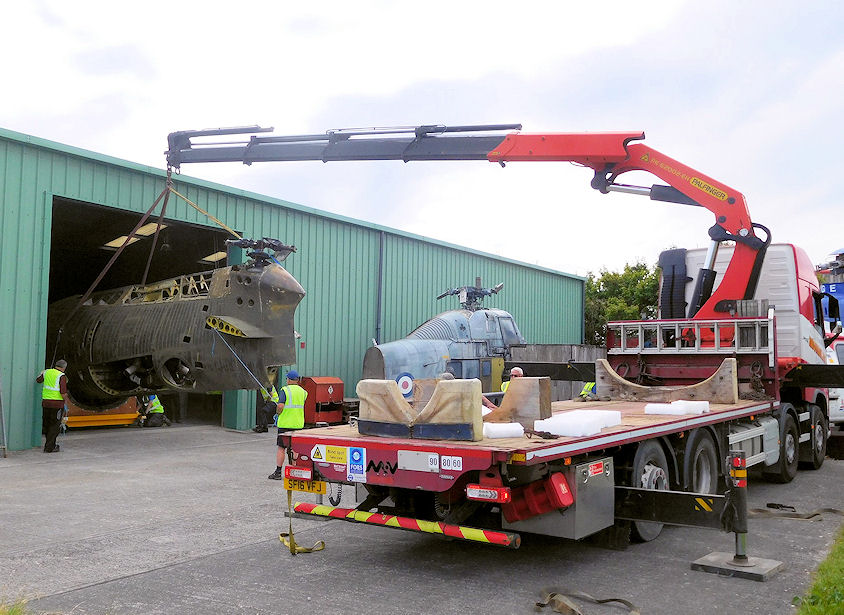
23 Jun-2022 - It's time for the big lift. The rear section of our H21 Flying Banana takes to the air once more But only for a short journey as it was lifted into the Museum's Conservation Hangar to be mounted on its specially constructed, moveable work base so that restoration work can commence on it.
The Piasecki H21 helicopter had been transported to the museum in two halves. Restoration of front cockpit, cabin and front rotorhead section has been in progress since 2019, with the rear section containing the engine, gearbox and rear rotorhead remaining in outside storage.
The restoration project has now reached the stage where the rear section could be brought indoors into the museum's Conservation Hangar for work to commence on its restoration and eventual marrying back up with the front section.
Whilst a full restoration is unlikely because of the cost and missing parts, it is certainly possible to restore the aircraft to show off its colourful history and early tandem-rotor technology, that eventually led to the Boeing Chinook of today.
Piasecki H-21C 'Flying Banana' FR41 - Fuselage Restoration
16 Nov-2022 - Clive and his team are making good progress on the restoration of the internal fuselage of the H21Flying Banana.
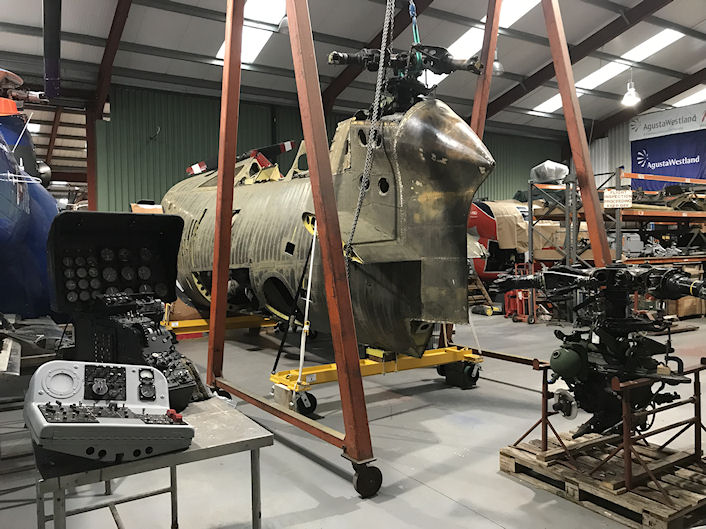

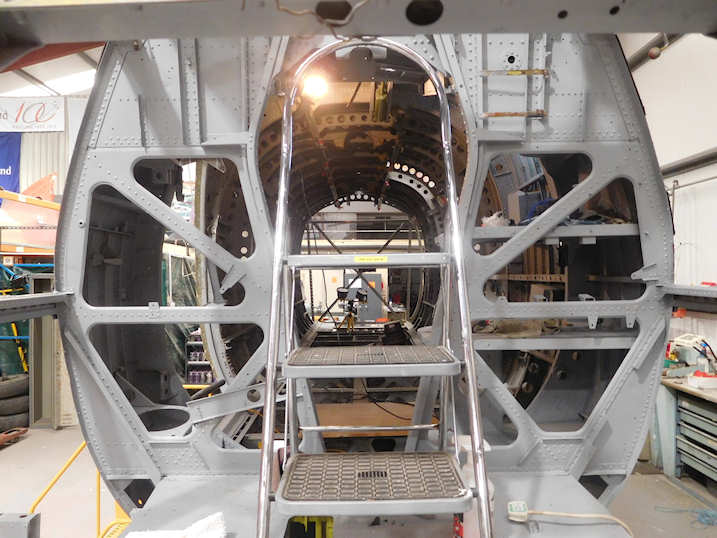
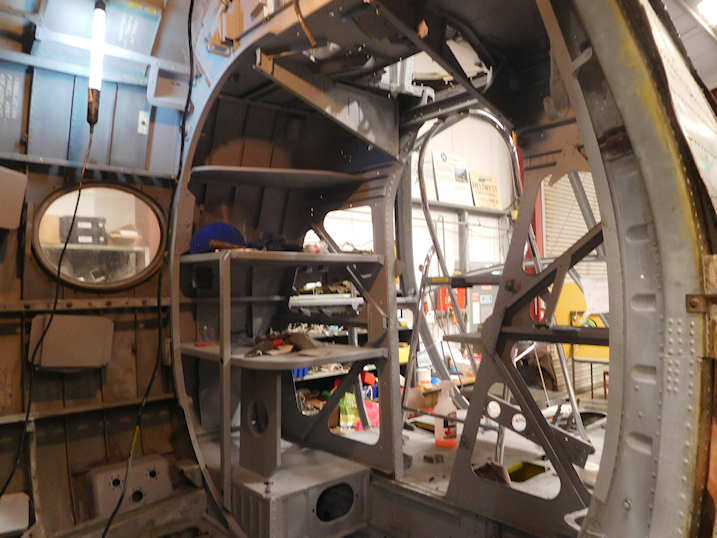
Update 15 August 2025
Update from the H21 Restoration Team.... 'We are in the process of making a head guard for the length of the internal propshaft in the forward section, so that people can walk through the helicopter via the two passenger doors.
With regards the rear section the plan is to remove the engine, then restore the airframe, the rear section has a lot more damage compared to the forward section. We are in the process of acquiring the two missing Engine Cover doors and the forward section large internal floor panel. But we still cannot find a source for the two missing passenger size doors, but we are still looking.'
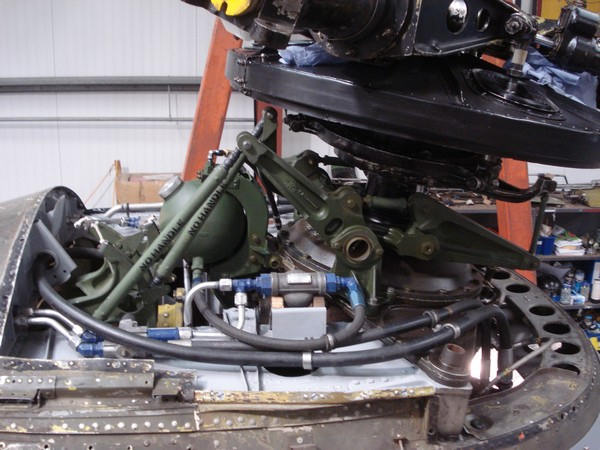
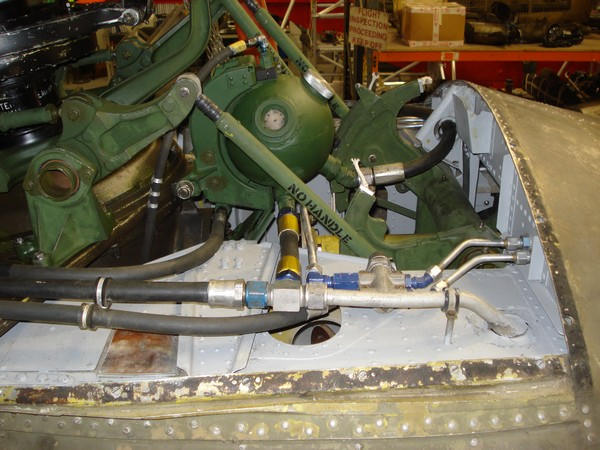
Update 27 November 2025
Good progress has been made and the cockpit is nearly complete. Original H21 parts received from Canada including control cables have been fitted. The cabin is being fitted out for access with head guards.
